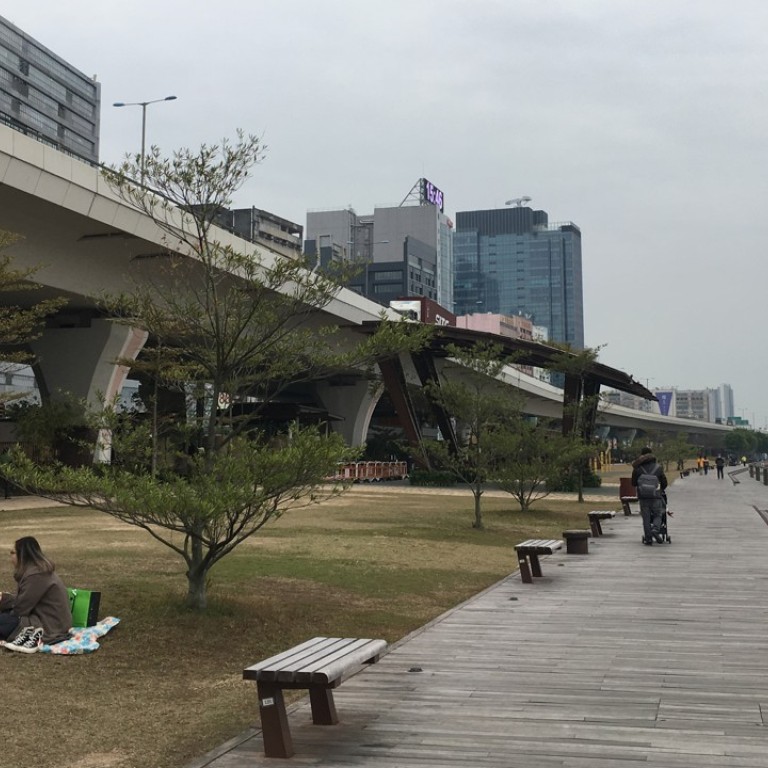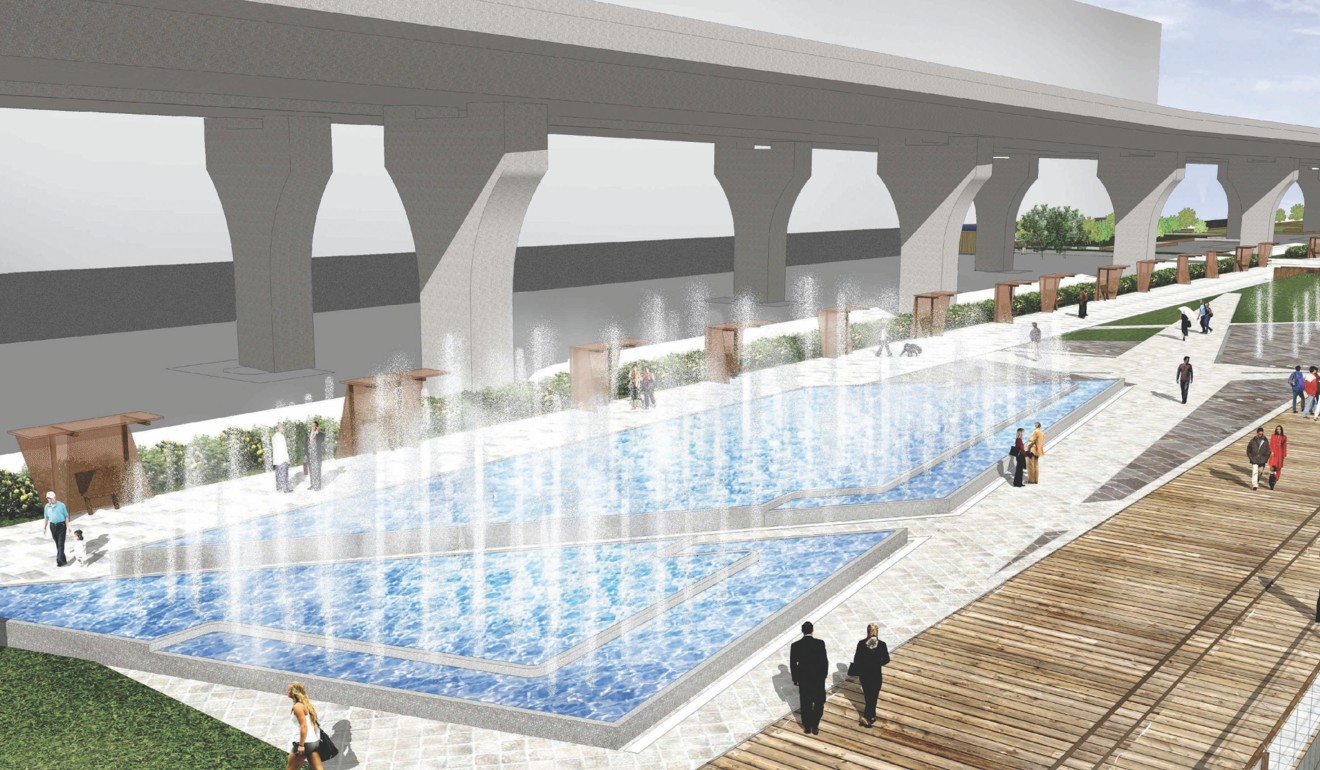
More democratic, or time-consuming and doomed to fail? Hong Kong government’s HK$100 million grants to district councils remain mostly unspent
Plan for musical fountains along Kwun Tong promenade among many still on the drawing board, with some other ideas scrapped entirely
Ho Kai-ming, a district councillor for Hong Kong’s Kwun Tong area, once envisaged taking his baby to see the music fountains on the area’s promenade, and looking across Victoria Harbour.
The fountains project, announced in 2013, was to cost HK$50 million. The idea was to revitalise the local area by getting people to enjoy walking along the waterfront. There would be “dynamic lighting, music features and special effects”.
It was part of the government’s Signature Project Scheme, announced in 2013, under which each district council would get a one-off grant of HK$100 million to pay for one or two big works to upgrade the quality of life locally.

“My son will have grown up when it is completed,” Ho, also a legislative councillor with the Federation of Trade Unions, said, referring to his two-year-old. He described the project as a “chicken rib”, a Chinese term meaning it has little value but it would be a pity discard it.
The fountains idea is once again before a Legco subcommittee under the Finance Committee, along with Wan Chai’s proposed activity centre on Moreton Terrace, after earlier scrutiny could not be completed before the body’s last term ended in July 2016.
Endorsed by councillors across the political divide, the fountains plan was attacked by some concern groups during the 2015 district council election. A survey by the Kowloon East Community Concern Group showed 86 per cent of people polled opposed the project.
And the mooted Wan Chai activity centre drew fire from the councillor for the constituency. Clarisse Yeung Suet-ying, elected in 2015, said residents opposed it as the local volleyball courts would have to be removed to make way for the new building.

These were not isolated cases. Tai Po’s proposed upgrade of tourist facilities at the Lam Tsuen wishing trees was widely criticised as a tacky recreation of Beijing’s Tiananmen Square, while Southern district’s idea of a fishermen’s cultural centre and seafood restaurant aroused concerns of conflicts of interest. Both projects were scrapped.
Southern District Council will instead go for two projects providing eye checks and free hospital shuttle buses, which await Legco approval.
The fountains idea gained wide support at the district council. It was Legco that turned it into a political issue
In a change from the previous Signature Project Scheme, which was led by district councillors in a bottom-up approach, this time the 18 district offices – the civil servants who work with the councils, under Home Affairs Department – would take a proactive role in deciding the target project.
Some say this would speed things up.
“Ideas floated by district councillors are a bit too wild,” Ho conceded when he recalled the experience in Kwun Tong, where councillors picked the fountain from a list of 12 ideas.
“It is also thorny to tackle different interests among parties.”
Yet Bunny Chan Chung-bun, chairman of the Kwun Tong council, said the key to smoothly delivering facilities lay with Legco. “The fountains idea gained wide support at the district council. It was Legco that turned it into a political issue,” he said, adding that either approach to deciding how to spend the cash sounded good, as long as it benefited the public.
The district office there proposed building lifts to connect Kai Tin Road and Lei Yue Mun Road under the new scheme. Chan said that was largely acceptable to the council.
Change in plans for Kwun Tong’s ‘goose egg’ building ruffles feathers
But some pro-democracy councillors disagreed with officials taking the lead.
Yeung said: “We are elected representatives. It is better for us to consult and engage residents first. What’s the rush?”
Veteran Southern district councillor Chai Man-hon echoed that, saying councillors have the public mandate and residents could worry that district officers are biased towards certain projects.
“The previous bottom-up approach does not work in some districts. Yet, the top-down approach may be accused of being undemocratic,” Chan Hok-fung, vice-chairman of Central and Western District Council, said.
His council was among the first to decide how to spend its cash, renovating 28 escalators in local wet markets. The idea, raised by the district office, was endorsed by councillors from various parties at a special committee last month.

